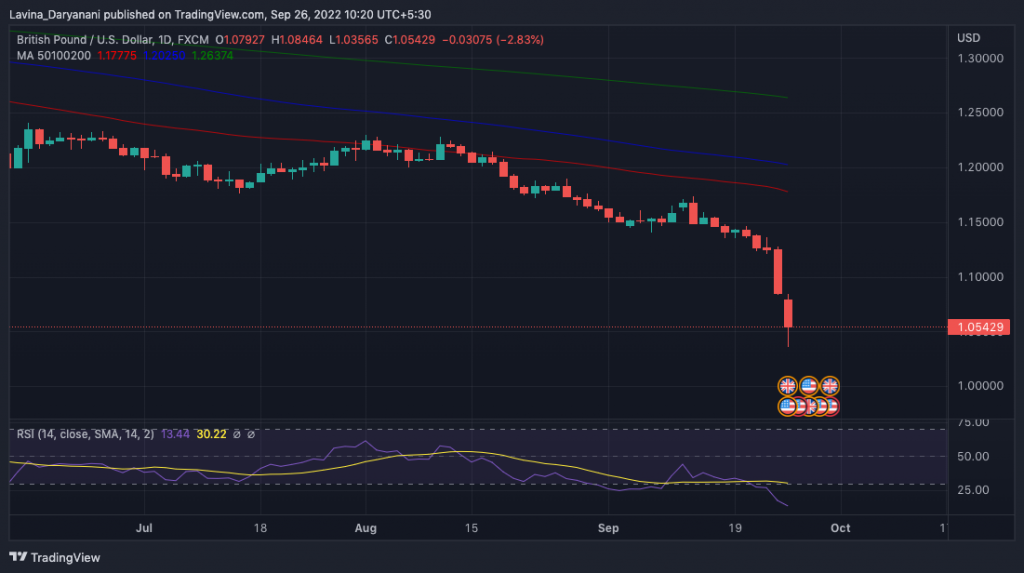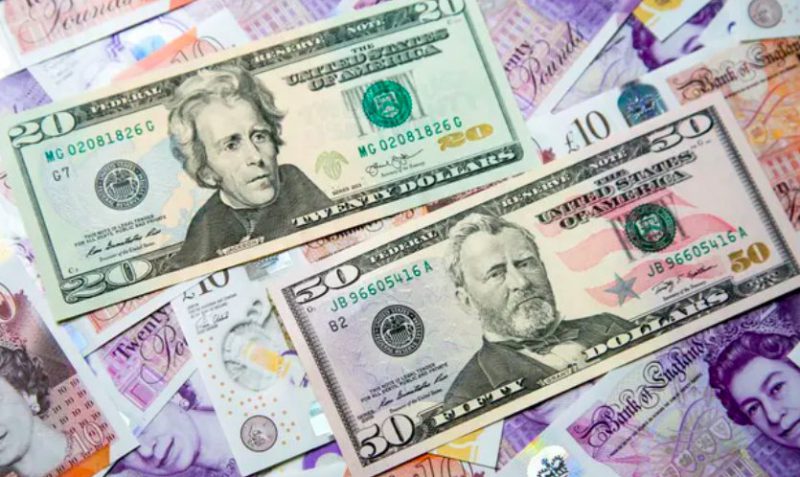From June to mid-September, the United Kingdom’s Pound mostly traded in the $1.14 to $1.23 bracket against the US Dollar. Over the past few days, however, the currency has been weakening at an alarming rate. After registering five back-to-back red candles on the daily, the GBP/USD pair was trading around $1.05 at press time.


In fact, earlier during the day, the pound had dropped down to an all-time low level of $1.03. The drop came after Chancellor of the Exchequer—Kwasi Kwarteng—unveiled historic tax cuts funded by huge increases in borrowing. In fact, per Bloomberg, investors punished the Chancellor for his “unapologetic dash for growth.”
Tweeting on similar lines, economist Peter Schiff said,
“It looks like the latest round of deficit-financed tax cuts will backfire, as a weak pound causes the cost of living to rise by more than the value of the tax cuts.”
Opining on the current state of GBP, Chris Weston—Head of Research at Pepperstone—told Reuters,
“Sterling is getting absolutely hammered. Investors are searching for a response from the Bank of England. They’re saying this is not sustainable.”
Owing to the volatility, the Chicago Mercantile Exchange temporarily halted GBP futures trading on its platform on Monday.
Worth recalling here is that the Bank of England announced an interest rate hike of 50 bps to 2.25% recently. The change from 1.75% to 2.25% put the bank rate at a 14-year high level. Notably, last week’s hike was the bank’s seventh rate rise in a row. In fact, alongside announcing the rate hike, the Bank’s Monetary Policy Committee forecast that the UK economy was already in recession.
Read More: Bank of England Raises Interest Rate by 50 bps to 2.25%
The said factors have, undoubtedly, deterred investors’ confidence. Jessica Amir—a strategist at Saxo Capital Markets in Sydney—told Bloomberg,
“The pound’s crash is showing markets have a lack of confidence in the UK and that its financial strength is under siege. The pound is a whisker away from parity and the situation is going to only worsen from here.”
In fact, Christopher Wong—a currency strategist at Oversea-Chinese Banking Corp. in Singapore—said that going short on the sterling was the market’s “favorite trade” for a stagflation proxy.
The Euro, on its part, has also been trading around at its 20-year lows against the US Dollar of late. With recession fears escalating in Europe amid the energy crisis extension, analysts believe that even its tumble will continue. At press time, the Euro was priced at $0.962, after dropping to $0.955 earlier during the day.





